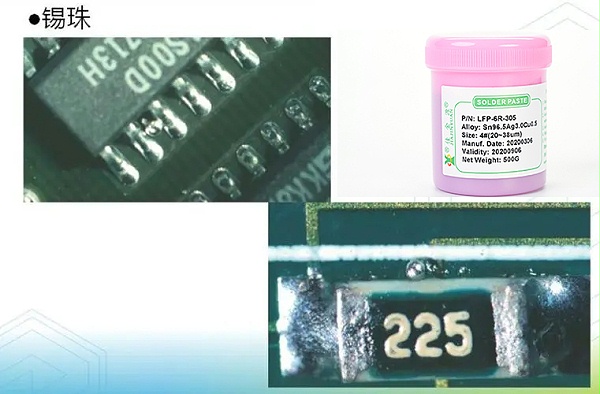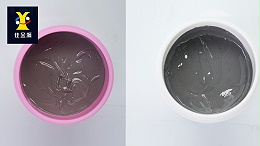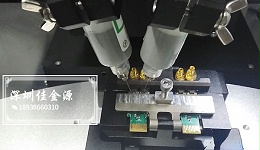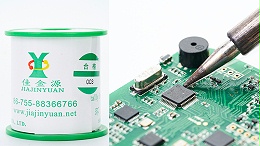
With the continuous development of electronic information products in terms of lightness, thinness, power saving, miniaturization and planarization, it is imperative for electronic products of different purposes to adopt surface mount technology.SMTTechnology. inSMTDuring the application of solder paste, the phenomenon of solder beads is inevitable, andLead-free solder pasteThe tin bead phenomenon isSMTThe main problems on the production line. So how to reduce tin beadsSMT One of the key aspects that enterprises need to focus on controlling. Now, Shenzhen JJY Solder Paste Manufacturer will talk about some issues related to solder paste and solder beads:

What is a tin bead? The diameter of the tin bead is approximately0.2mmto0.4mmAmong them, there are also those exceeding this range, mainly concentrated around the chip resistors and capacitors. The presence of solder beads not only affects the appearance of electronic products, but also poses hidden dangers to the quality of the products. The reason is that the component density of modern printed circuit boards is high and the spacing is small. During use, solder beads may fall off, causing short circuits in components and affecting the quality of electronic products.
Solving the problem of tin beads is an important issue for improving the production quality. To solve this problem, it is necessary to first understand where the problem occurs and control the generation of tin beads from the root of the problem. During the application of solder paste, the reasons for the formation of solder beads are multi-faceted. The printing thickness of lead-free solder paste, the composition and oxidation degree of the solder paste, the production and opening of the template, whether the solder paste absorbs moisture, the installation pressure of components, the solderability of components and pads, the setting of reflow soldering temperature, etc., all these factors can lead to the formation of solder beads.
First of all, the quality of solder paste is the most influential factor, the metal content of lead-free solder paste. The mass ratio of metal content in solder paste is approximately88%~92%The volume ratio is approximately50%.When the metal content increases, the viscosity of the solder paste increases, which can effectively resist the resistance caused by evaporation during preheating. In addition, the increase in metal content makes the metal powder arrangement tighter and easier to bond, and it is not blown away during the melting process. Moreover, the increased metal content can also reduce the "collapse" of the solder paste after printing, so it is less likely to have solder beads. The degree of metal oxidation of solder paste. In solder paste, the higher the degree of metal oxidation, the greater the resistance to the adhesion of metal powder during the soldering process, and the less the penetration between the solder paste and the pad and components, resulting in a decrease in solderability. The experimental results show that the occurrence rate of tin beads is directly proportional to the oxidation degree of the metal powder. The oxidation degree of the solder in the solder paste should generally not be exceeded0.05%The maximum can be reached0.15%.
The particle size of the metal powder in solder paste. For reflow soldering, the smaller the particle size of the powder in the solder paste, the larger the total surface area of the solder paste, which leads to a higher degree of oxidation of the finer powder, thereby intensifying the solder beads. Experiments show that when choosing a solder paste with a finer particle size, it is easier to produce solder beads.
The printing thickness of solder paste on the printed circuit board. The thickness of lead-free solder paste after printing is an important parameter for template printing, usually in0.12mm-20mmBetween. Excessive thickness of solder paste can cause it to "sink", promoting the formation of solder beads. Excessive use of flux can cause part of the solder paste to collapse, making it easy to form solder beads. In addition, if the activity of the flux is low, its deoxidation ability is also weak, which can also easily lead to the formation of solder beads.
The activity of clean solder paste is lower than that of rosin and water-soluble solder paste, so it is more likely to produce solder beads.
There are many reasons for the formation of solder beads. The presence of solder beads will inevitably affect the quality and appearance of solder products. The solder mask layer on the circuit board is the most important factor affecting the formation of solder beads. Based on the above reasons, there are the following several coping strategies. There are specifically the following several methods to reduce the production of tin beads:
1Choosing the appropriate solder mask layer can prevent the formation of solder balls.
2Using some specially designed fluxes can also prevent the formation of solder balls.
3Minimize the temperature of solder products to the greatest extent.
4Use sufficient flux to prevent the formation of solder balls.
5Maximize the preheating temperature, but pay attention to the preheating parameters of the flux to prevent the activation period of the flux from being too short.
6Try to increase the speed of the conveyor belt as much as possible.
Shenzhen JJY Industrial Technology Co., Ltd. is located in Longhua, Shenzhen. It mainly produces and operates lead-free solder paste, lead-free high-temperature solder paste, lead-free medium-temperature solder paste, lead-free low-temperature solder paste, etc. If you have any needs, please feel free to contact us.



